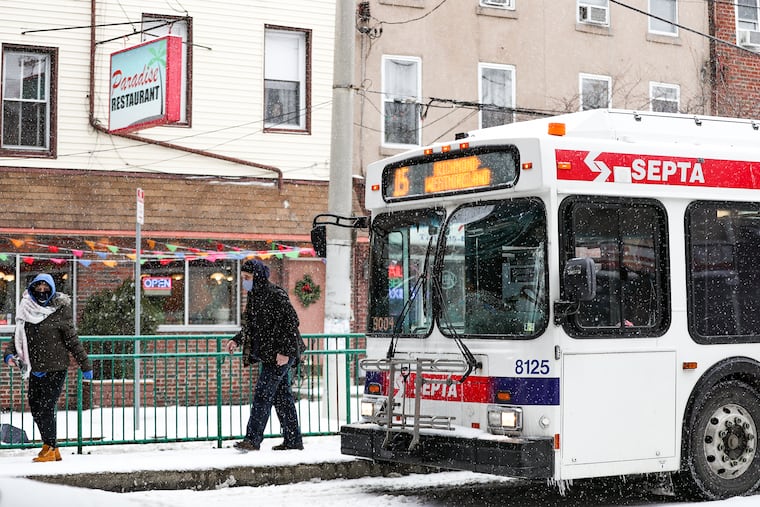Equity is driving force behind Philly’s new transit plan | Editorial
Transit is at the heart of making every other system work: education, jobs, healthcare, housing, environment.

As Philadelphia works toward an equitable, just recovery, citywide planners should pay attention to the model set by the Philadelphia Transit Plan: A Vision for 2045. Announced by Mayor Kenney and developed by the Office of Transportation, Infrastructure and Sustainability (OTIS), the plan positions equity as its driving force, and the result is a refreshing blend of optimism and realism that embodies the city we aspire to be — and feels achievable.
Transit is at the heart of making every other system work: education, jobs, healthcare, housing, environment. If our transit is not designed to resolve racial and economic inequity, then each of those other systems suffers, and exacerbates the divisions across our city.
The plan wisely hinges on modifications to bus networks — never the sexiest transportation topic, but for a changing city, they’re the cheapest and most practical lever to push. As neighborhoods grow, it’s a lot easier to move a bus line than a train or trolley track. Making buses more reliable and predictable requires improving traffic flow, carving out road space for buses, and moving (or sometimes reducing) pickup spots, much of which can be accomplished with relatively minor capital investments. For SEPTA, whose budget the pandemic has walloped, efficiency will be the only way to make measurable progress in the near future.
» READ MORE: Better bus service could mean more opportunities for Philadelphia workers
Yet the plan also includes big-ticket items that will take longer to build, but will have more transformational effects. Some, like extending PATCO westward into University City, would make West Philadelphia’s eds and meds exponentially more accessible to Camden, while others, like adding light rail or bus rapid transit to Roosevelt Boulevard and Delaware Avenue, would open up major corridors that have been car-centric for decades. Those more ambitious plans will take a while, so it’s important to get them on paper. Philadelphia’s 1960 comprehensive plan called for the Center City Commuter Connection tunnel; it took until 1984 for that tunnel to be complete, but now it’s difficult to imagine our transit system without it. Achieving larger equity goals takes time and big vision, so it’s worth getting started now.
As focused as the plan is, there is room to push the envelope. While the plan is full of delicious carrots to move people onto transit, we’d like to see more sticks to disincentivize car use, such as dynamic metering (making downtown parking more expensive in peak hours); jacking up the price of residential parking permits; and tightening zoning rules, to encourage home developers not to build street-facing garages that encourage car ownership. We could also use better bike network integration, and less popular but more environmental measures that promote electric vehicle adoption for those who do drive.
As OTIS leads the plan’s implementation in partnership with SEPTA, PennDOT, PATCO and others, it will need exhaustive, persistent community engagement in every neighborhood to ensure buy-in. That’s proved a challenge for the Kenney administration, even before the pandemic made it that much more difficult. But if officials take to heart the Transit Plan’s focus on racial and economic equity and justice, we can emerge from the pandemic stronger than when we started. Then we’ll really be getting somewhere.